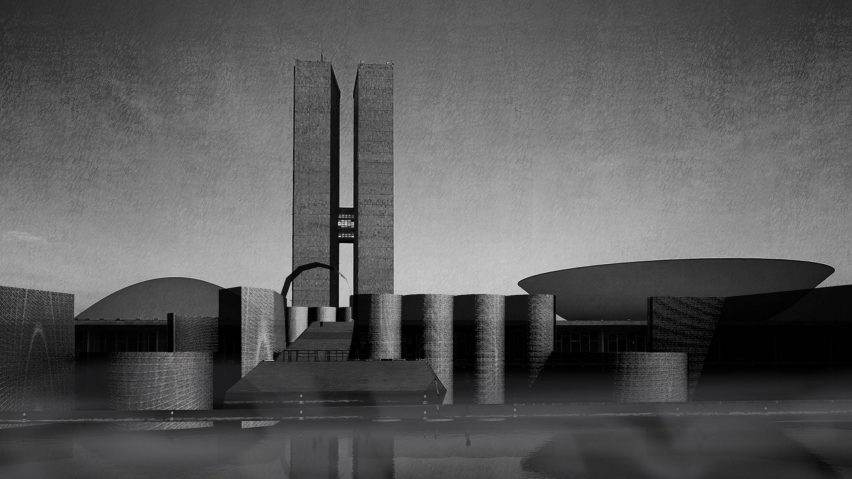Provocative architecture studio Opposite Office has designed the Castillo Congresso wall to encircle Brasília's National Congress and turn the Oscar Niemeyer-designed building into a "fortress to protect democracy".
The studio designed the wall as a "reaction to the storm on the National Congress of Brazil in Brasilia by supporters of the voted out president Bolsonaro," it said.
Earlier this week, Bolsonaro supporters rioted in Brazil's capital of Brasília, damaging the iconic Oscar Niemeyer-designed National Congress, Planalto Palace and Supreme Court buildings as they called for the removal of newly elected Brazil president Luiz Inácio Lula da Silva, known as Lula.
To stop this from happening again, Opposite Office designed the Castillo Congresso wall. It envisions the design will convert Brazil's National Congress building into a "fortress to protect democracy" in a project the studio described as "dystopian".
A solid 1.5-metre-thick wall made from recycled bricks would encircle the building, which was designed by Brazilian architect Niemeyer and completed in 1960.
The studio designed the wall with geometric shapes based on Niemeyer's building designs, though Opposite Office architect Benedikt Hartl said the Brazilian architect might not have liked it.
"Of course, we, as Opposite Office, are aware that accessing an architectural icon such as Niemeyer's work is very difficult and delicate," he told Dezeen.
"Oscar Niemeyer probably wouldn't agree with this design either. In general, we tried to design as sensitively as possible, but it is also clear that a solid wall, a protection wall, will have a certain presence," he added.
"Security is not for free! If we don't manage to solve the problem of division of society, we have to build walls and cannot take sensitivities into account."
The Castillo Congresso design is a continuation of Capitol Castle, which Opposite Office released in January 2021 following the invasion of the building by Donald Trump supporters.
The studio suggested that Castillo Congresso could be seen as a "recycling project", using the same brick design as that of the Capitol Castle project.
"Of course we had adjust the design according to the building, but our wall is a modular system, consisting of different geometrical shapes," Hartl said.
"We have triangle, circular-shaped and straight parts. Capitol and Congresso are quite similar in shape and circumference. Capitol is with its approximately 230 x 107 metres a bit bigger than Congresso, with around 200 x 75 metres," he added.
"For the project Castillo Congresso in Brasilia, we tried to reuse all parts of Capitol Castle's wall. According to the general layout of the building we just had to change the arrangement a bit."
Having designed the initial wall to protect the US Capitol building, the studio believes that seeing history repeat itself is proof of how divided the world has become.
"First of all, it says nothing good about the state of our political system," Hartl said.
"In many countries, society seems to be divided into two parts that move further and further apart instead of shaking hands," he added.
"So when we see that similar things happen around the world, everything becomes polarized, opinions become more and more extreme, we really should try to work on solutions that bring people together again."
Other speculative designs by Opposite Office include a proposition to turn the Nord Stream gas pipeline into a site of international cooperation and changing Berlin's Brandenburg airport into a superhospital.

